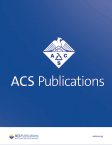摘要 PO3-24-04:HER2阳性乳腺癌继发性曲妥珠单抗耐药性形成过程中表观遗传修饰和基因组结构的改变重塑了脂质代谢
IF 3.4
Q2 PUBLIC, ENVIRONMENTAL & OCCUPATIONAL HEALTH
引用次数: 0
摘要
标题 HER2 阳性乳腺癌继发性曲妥珠单抗耐药形成过程中表观遗传修饰和基因组结构的改变重塑了脂质代谢 背景 继发性曲妥珠单抗耐药严重影响了 HER2 阳性乳腺癌的治疗。虽然已有研究证实了与曲妥珠单抗耐药性形成密切相关的几种关键细胞特性,但我们对促进这种转变的遗传和表观遗传变异仍然知之甚少。在此,我们认为组蛋白 H3 的表观遗传修饰变化以及染色质结构的改变促进了继发性曲妥珠单抗形成过程中的脂质代谢重编程。材料与方法 本研究采用了诱导的继发性曲妥珠单抗耐药 SKBR3_HR 细胞系和原始的曲妥珠单抗敏感 SKBR3 细胞系。收集总 RNA 进行转录组分析。选用抗 H3K4me3 和 K27me3 抗体制备 CUT&Tag 测序文库。总基因组 DNA 用于 Micro-C 测序文库的制备。新陈代谢通路的活性分值按该通路所有基因在特定细胞类型中的平均相对基因表达值计算。结果 从SKBR3细胞到SKBR3_HR细胞,在形成曲妥珠单抗继发性耐药性的过程中,观察到花生四烯酸代谢的上调和不饱和脂肪酸合成的下调,其主要特征分别是PTGS1和PTGES基因的激活以及FASN和SCD基因的抑制。H3k4me3而非H3k27me3的变化调控着这4个基因的表达。在SKBR3_HR细胞中,PTGS1和PTGES基因的启动子上检测到了H3k4me3的积累,而FASN和SCD基因的启动子上则没有H3k4me3。在抗药性形成过程中,更多的染色体内相互作用发生了。具体而言,在 SKBR3 和 SKBR3_HR 细胞中分别形成了 4626 和 4394 个拓扑相关域、3125 和 5824 个 DNA 环。此外,SCD和PTGS1基因与遥远的基因组区域之间DNA环的丢失和获得可能表明与位于该区域的转录调节因子的相互作用减弱或增强。结论 在曲妥珠单抗耐药性形成过程中,组蛋白修饰的改变以及基因组结构的升高可能会调控脂质代谢通路中关键基因的表达,从而进一步影响细胞的特性以及与肿瘤微环境中细胞的相互作用。引用格式:段宁军,华益嘉,尹咏梅.HER2阳性乳腺癌继发性曲妥珠单抗耐药形成过程中表观遗传修饰和基因组结构的改变重塑脂质代谢[摘要].In:2023 年圣安东尼奥乳腺癌研讨会论文集;2023 年 12 月 5-9 日;德克萨斯州圣安东尼奥。费城(宾夕法尼亚州):AACR; Cancer Res 2024;84(9 Suppl):Abstract nr PO3-24-04.本文章由计算机程序翻译,如有差异,请以英文原文为准。
Abstract PO3-24-04: Altered epigenetic modifications and genome architecture reshape lipid metabolism during secondary trastuzumab resistance formation of HER2-positive breast cancer
Title
Altered epigenetic modifications and genome architecture reshape lipid metabolism during secondary trastuzumab resistance formation of HER2-positive breast cancer
Background
Secondary trastuzumab resistance seriously affects the treatment of HER2-positive breast cancer. Although studies have demonstrated several key cellular properties that are closely accompanied with trastuzumab resistance formation, we still have poor knowledge on the genetic and epigenetic variations that promote such transformation. Here we suggested that the epigenetic modification changes on histone H3 together with altered chromatin architecture promote lipid metabolism reprogramming during secondary trastuzumab formation.
Materials and methods
Induced secondary trastuzumab-resistant SKBR3_HR cell line together with the original trastuzumab-sensitive SKBR3 cell line were applied in this study. Total RNA was collected for transcriptome analysis. Anti-H3K4me3 and K27me3 antibodies were chosen for CUT&Tag sequencing library preparation. Total genome DNA was prepared for Micro-C sequencing library preparation. Activity score of metabolism pathway was calculated as relative gene expression value averaged over all genes in this pathway in certain cell types.
Results
Upregulation of arachidonic acid metabolism and downregulation of unsaturated fatty acid synthesis, which are mainly characterized by the activation of PTGS1 and PTGES genes and the repression of FASN and SCD genes, respectively, were observed during the formation of secondary trastuzumab resistance from SKBR3 cell to SKBR3_HR cells.
Variations of H3k4me3 instead of H3k27me3 regulate the expression of these 4 genes. The accumulation of H3k4me3 was detected at the promoters of PTGS1 and PTGES genes while they were removed from the promoters of FASN and SCD genes in SKBR3_HR cells.
More intra-chromosomal interactions were constituted during resistance formation. In detail, 4626 and 4394 topological associated domains, 3125 and 5824 DNA loops were founded in SKBR3 and SKBR3_HR cells, respectively. Furthermore, the lost and gained DNA loops between SCD and PTGS1 genes and distant genome regions may indicate the weaken and strengthen interactions with transcriptional regulators located there.
Conclusions
During trastuzumab resistance formation, altered histone modifications as well as higher genome structure could regulate the expression of key genes in lipid metabolism pathways, which may further affect cell properties and interactions with cells in tumor microenvironment.
Citation Format: Ningjun Duan, Yijia Hua, Yongmei Yin. Altered epigenetic modifications and genome architecture reshape lipid metabolism during secondary trastuzumab resistance formation of HER2-positive breast cancer [abstract]. In: Proceedings of the 2023 San Antonio Breast Cancer Symposium; 2023 Dec 5-9; San Antonio, TX. Philadelphia (PA): AACR; Cancer Res 2024;84(9 Suppl):Abstract nr PO3-24-04.
求助全文
通过发布文献求助,成功后即可免费获取论文全文。
去求助
来源期刊

ACS Chemical Health & Safety
PUBLIC, ENVIRONMENTAL & OCCUPATIONAL HEALTH-
CiteScore
3.10
自引率
20.00%
发文量
63
期刊介绍:
The Journal of Chemical Health and Safety focuses on news, information, and ideas relating to issues and advances in chemical health and safety. The Journal of Chemical Health and Safety covers up-to-the minute, in-depth views of safety issues ranging from OSHA and EPA regulations to the safe handling of hazardous waste, from the latest innovations in effective chemical hygiene practices to the courts'' most recent rulings on safety-related lawsuits. The Journal of Chemical Health and Safety presents real-world information that health, safety and environmental professionals and others responsible for the safety of their workplaces can put to use right away, identifying potential and developing safety concerns before they do real harm.
 求助内容:
求助内容: 应助结果提醒方式:
应助结果提醒方式:


